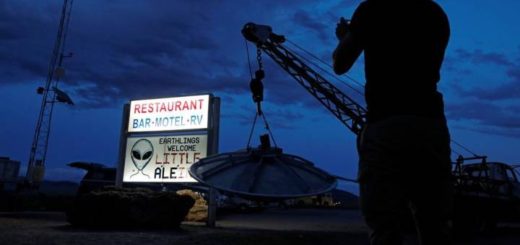Space photos: The most amazing images this week!

Astronauts celebrate the Olympics in their own special way, a decommissioned part of the International Space Station burns up in the atmosphere and satellites keep watch of wildfires in the northern hemisphere. These are some of the top photos this week from Space.com.
Mars’ South Pole
The bright white region of this image, captured by Europe’s Mars Express spacecraft in December 2012, shows the icy cap that covers Mars’ south pole, composed of frozen water and frozen carbon dioxide.
(Image credit: ESA/DLR/FU Berlin/Bill Dunford)
The search for life on Mars is often associated with the search for water. The bright region of this image shows an icy cap that covers the Red Planet’s south pole. This image was taken in December 2012 by Europe’s Mars Express spacecraft.
Scientists have suspected that water exists below the Martian ice caps like it does on Earth. But new research shows that it may actually just be clay. According to the author of the study, an unlikely amount of heat and salt may be needed to form and maintain liquid water under the ice caps on Mars.
Full story: Mars’ buried polar ‘lakes’ may just be frozen clay
Super Heavy plumbing
Elon Musk tweeted this view of the engine section of a Super Heavy booster on July 29, 2021.
(Image credit: Elon Musk via Twitter)
SpaceX CEO Elon Musk tweeted this image on Thursday (July 29) with a caption that explains the symmetrical tubing seen here. “Completing feed system for 29 Raptor rocket engines on Super Heavy Booster,” Musk wrote in the tweet.
This engine plumbing would supply the fuel for a reusable transportation system being developed by SpaceX to eventually bring people to interplanetary destinations like the moon and Mars. Super Heavy is the giant first stage of the rocket, Starship would be the massive second stage. Both of these elements will be powered by the new Raptor engines, which run on liquid methane and liquid oxygen.
Full story: Elon Musk shows off wild plumbing for 29-engine Super Heavy booster (photo)
Long March 2C launches final Yaogan 30 satellites
Launch of a Long March 2C carrying the Yaogan 30 (10) satellites from Xichang.
(Image credit: CASC)
In this image, a Chinese Long March 2C rocket takes off from the Xichang Satellite Launch Center in southwest China. The rocket launched on July 18 to loft three satellites from China’s Yaogan 30 series into Earth orbit.
This trio was the tenth and final group from the series to launch into orbit. The first Yaogan 30 series launch happened in September 2017. According to China’s state-run press agency Xinhua, the satellites “will survey the electromagnetic environment and verify relevant technologies by adopting multi-satellite network mode.”
Full story: China launches classified satellites, tests landing nose cone with parachute
Olympics in space!
astronauts on board the International Space Station celebrate the Olympics
(Image credit: Thomas Pesquet)
The crew onboard the International Space Station is enjoying this year’s summer Olympics in a special way. A week before the Tokyo games began, the spacefarers held a friendly competition that European Space Agency (ESA) astronaut Thomas Pesquet called “the very first space Olympics” in a description of this image, where four crew members are holding an imitation of an Olympic medal.
“For crew cohesion and fun, we put together a friendly competition between the Soyuz team and the Dragon team!” The events ranged from “synchronised floating or lack-of-floor routine to (very) long jumps and no-hand ball,” according to Pesquet. The station is commanded by Japanese astronaut Akihiko Hoshide of the Japan Aerospace Exploration Agency and is home to three American astronauts, two Russian cosmonauts and Pesquet. The team names are derived from the space vehicles that carried different crew members up to the space station.
Full story: Astronauts are celebrating their own Summer Olympics in space (satellites, too)
Goodbye, Pirs
Images captured by European Space Agency astronaut Thomas Pesquet on July 26, 2021, show a Russian Progress capsule tugging the retired Pirs module to burn up in Earth’s atmosphere.
(Image credit: ESA/NASA–T. Pesquet)
On Monday (July 26), the Pirs module of the International Space Station was purposely released from the station to burn up in Earth’s atmosphere. European Space Agency (ESA) astronaut Thomas Pesquet commented that seeing a cornerstone of the space station burn up as a fireball was quite a sight to behold.
“Quite a strange feeling to see a part of your ship fly away in mid-air (so to speak — no atmosphere here duh),” European Space Agency astronaut Thomas Pesquet wrote in a statement shared with the photographs on Monday. Pirs was released to make room from Nauka, Russian’s new module.
Full story: Astronaut watches Russian space station module fall from space in fiery demise (photos)
Photographer captures Rocket Lab’s return to flight in picturesque New Zealand dusk
Joe Baxter travelled 250 miles to capture Rocket Lab’s return to flight.
(Image credit: Joseph Baxter)
Amateur photographer Joseph Baxter travelled 250 miles (400 kilometers) to capture the successful return to flight of Rocket Lab’s Electron rocket on Thursday (July 29). Baxter, who makes living as a factory worker, told Space.com he had to “convince his boss to let me have a day off” so that he could drive all the way from Masterton, a town in the south of New Zealand’s North Island, to the Mahia Peninsula from where Rocket Lab launches.
“I used a Lumix G100 camera and a 7artisans fisheye lens,” said Baxter, who publishes his images on Instagram at @j.baxters_photos. “[The] image was made using live composite mode. Exposure time was about 5 mins total.” — Tereza Pultarova
Siberia on fire
A massive cloud of smoke in northeastern Russia covering an area larger than Germany.
(Image credit: Copernicus)
Thursday, July 29, 2021: A smoke cloud larger than Germany can be seen hovering above northeastern Russia where out of control wildfires have destroyed thousands of square miles of forest.
The image, taken by the European Sentinel-3 satellite on Wednesday, July 28, shows wildfires in the Siberian Republic of Sakha, also known as Yakutia, which is currently the most affected region of Russia. According to the Russian Federal Forestry Agency, 7,300 square miles of vegetation have been destroyed across the country by wildfires, which are so widespread that about 55% of them are not attended to. — Tereza Pultarova
Starliner ready to go
Boeing’s Starliner capsule atop ULA’s Atlas V rocket ready for its second unmanned test flight to the International Space Station.
(Image credit: Boeing/Damon Tucci)
Boeing’s Starliner CST-100 space capsule can be seen attached to the top of the United Launch Alliance Atlas V rocket ahead of its second unmanned flight to the International Space Station later this week. The flight, scheduled for Friday, July 30, is a major milestone for Boeing and NASA, paving the way for Starliner to join SpaceX’s Crew Dragon in ferrying astronauts to and from the orbital outpost.
During its first test flight in December 2019, Starliner failed to reach the space station due to software glitches and errors in its communication system. NASA and Boeing spent months mitigating the issues. For its upcoming flight, Starliner will carry a modest 400 pounds (180 kg) of cargo and a crash test dummy designed to measure the mechanical forces that future astronauts will experience during lift-off and landing. — Tereza Pultarova
Starliner test flight crew member readies for launch
A crash test dummy called Rosie inside Boeing’s Starliner capsule ahead of a launch to the International Space Station.
(Image credit: Boeing)
A crash-test dummy called Rosie sits in the commander’s seat of Boeing’s CST-100 Starliner space capsule ahead of a test flight to the International Space Station later this week. The dummy, outfitted with 15 sensors, will help Boeing and NASA understand the mechanical pressures that astronauts will experience during the flight. Rosie was onboard the Starliner capsule already during the first unmanned flight in December 2019, which failed to reach the space station due to software glitches and problems with its communication systems.
Starliner is scheduled to make its second attempt to dock with the space station this weekend. It will launch from Cape Canaveral on Friday (July 30). If all goes well, the spacecraft will start ferrying astronauts to the orbital outpost later this year. — Tereza Pultarova
Wildfires in the western U.S. seen from space station
Wildfires raging in the western U.S. seen from the International Space Station.
(Image credit: NASA)
Wildfires ravaging the western U.S. can be seen in this image taken from aboard the International Space Station by NASA astronaut Mark Vande Hei on Saturday (July 24).
“Very sad to see these fires in the Western United States late Saturday afternoon,” Vande Hei tweeted with the image. “My thoughts and prayers go out to all of those affected.” Wildfires are raging in many areas in the western parts of the U.S, sending choking plumes of ash and smoke into the atmosphere. NASA reported last week that the fires are affecting air quality across the country with many places on the east coast suffering from fire-related air pollution blown over by wind from the west. — Tereza Pultarova



 Creators of mankind
Creators of mankind Description of “Tall white aliens”
Description of “Tall white aliens” Where they came from?
Where they came from? About hostile civilizations
About hostile civilizations The war for the Earth
The war for the Earth “Tall white aliens” about eternal life
“Tall white aliens” about eternal life Video: “Nordic aliens”
Video: “Nordic aliens” Aliens
Aliens Alien encounters
Alien encounters The aliens base
The aliens base UFO
UFO Technology UFO
Technology UFO Underground civilization
Underground civilization Ancient alien artifacts
Ancient alien artifacts Military and UFO
Military and UFO Mysteries and hypotheses
Mysteries and hypotheses Scientific facts
Scientific facts


















